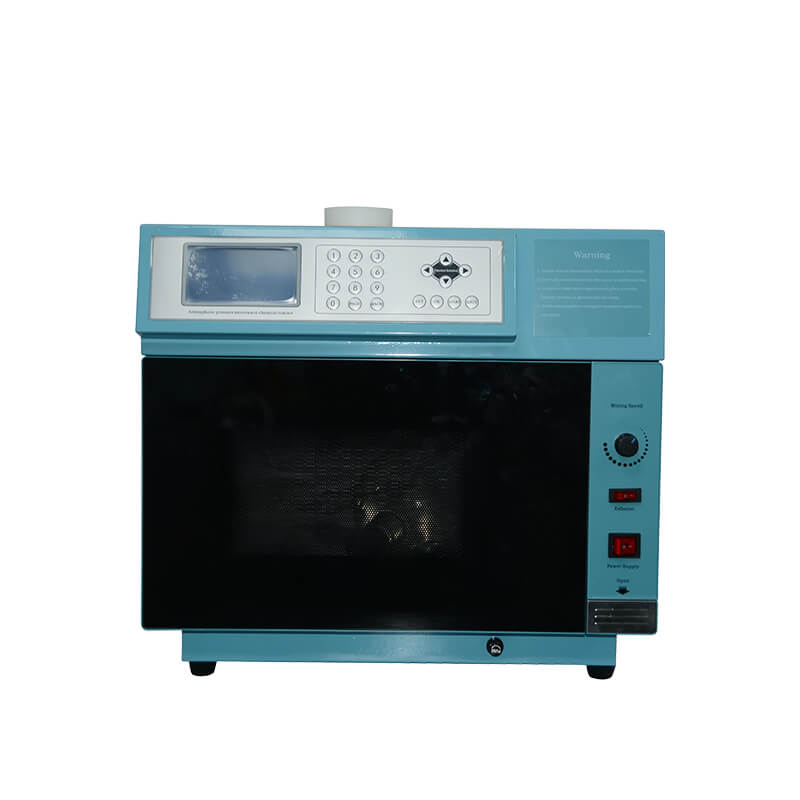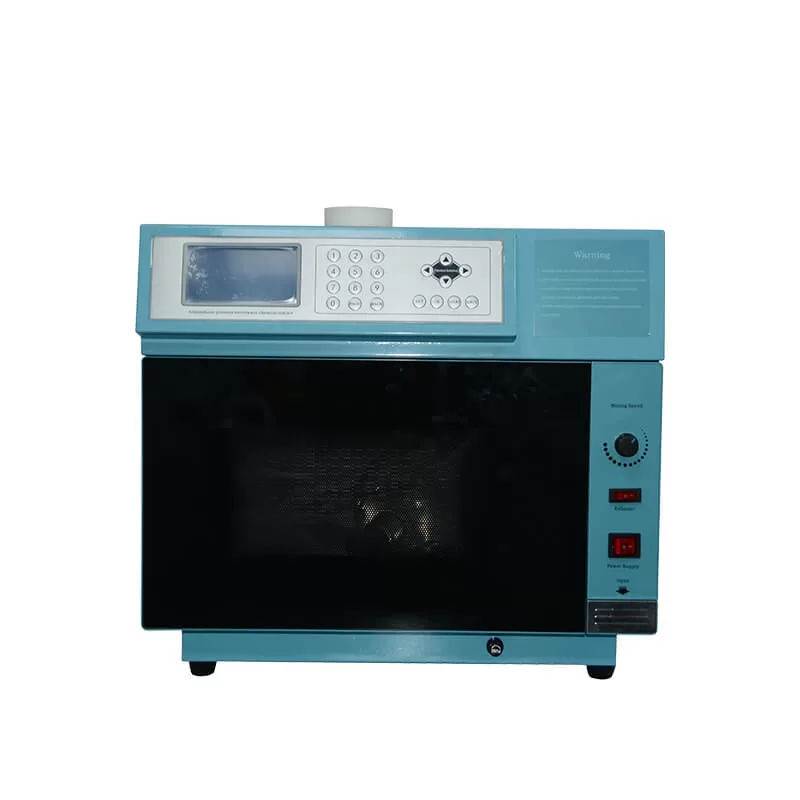Description
Microwave Chemical Reactor
Microwave chemical reactor adopts the world’s advanced microwave power automatic frequency conversion control and non-pulse continuous microwave heating technology, and real-time monitoring of the temperature in the reaction vessel through a high-precision temperature sensor. The reactor is equipped with electromagnetic stirring mode. During the reaction process, operations such as condensing reflux, dripping and water separation can be performed, and the changes in the reaction vessel can also be observed in real time through the liquid crystal display. In addition to being used for synthesis reactions, this equipment can also be used for atmospheric microwave extraction reactions.

Application of Microwave Chemical Reactor
Microwave chemical reactor is suitable for organic synthesis chemistry, medicinal chemistry, food science, quarantine and epidemic prevention, military chemistry, molecular biology, analytical chemistry, inorganic chemistry, petrochemicals, materials science, biomedical science and other related fields.
Heating Principle of Microwave Chemical Reactor
Microwaves are electromagnetic waves with extremely short wavelengths. They are electromagnetic waves like radio waves, infrared rays, and visible light. The frequency range of microwave is 300MHz-300KMHz, that is, the wavelength is 1mm-1m.
The principle of microwave heating: microwave heating is the use of microwaves as an energy source. When microwaves interact with material molecules, they produce molecular polarization, orientation, friction, collision, and absorption of microwave energy to produce thermal effects. This heating method is called microwave heating.
Microwave heating means that an object generates heat after absorbing microwaves. Different materials have different ability to absorb microwaves, and their heating effects are also different. This mainly depends on the dielectric loss of the material.
Features of Microwave Chemical Reactor
- Microwave Continuous Output Mode
- PID Adjustment: PID parameters can be flexibly adapted to different operating environments.
- Dual CPU: Add a CPU as a co-processor to assist the main processor in temperature control.
- High-precision Thin-film Platinum Resistance Temperature Sensor
- Multi-segment Working Mode: Working hours can be set.
- Display Real-time Curve Function: The temperature changes can be viewed more intuitively.
- Storage Parameter: The parameters you enter will be saved in the flash memory, which is convenient for you to operate the next time without repeating the input.
- Large Screen LCD Display
- Temperature Error Correction Function
- Safe Interlock Switch
- Built-in Magnetic Stirrer:The stirring speed is stepless adjustable.
- Open Reaction System
Parameter of Microwave Chemical Reactor
|
Power Supply |
220V 50HZ |
|
Power |
Total:1300W Microwave Power:0 ~ 800W |
|
Microwave Power |
2450MHz ± 50Hz |
|
Temperature Control |
Temperature Measurement Accuracy 0.2 level Temperature Control Accuracy <±1℃ Temperature Control Range 0~250℃ |
|
Temperature Measurement Method |
Contact type PTFE temperature sensor can detect internal temperature |
|
Container Size |
330x330x235mm |
|
Total Dimension |
400x510x470mm |
Operation Precautions
- Please close the reactor door. If the furnace door is not closed, the lamp in the furnace will not light up, the magnetron will not work, and there will be no microwave output.
- It is strictly forbidden to turn on the microwave when there is no load in the furnace cavity to avoid damage to the magnetron.
- When the door is opened during the microwave reaction, the program will stop running and the magnetron will stop emitting microwaves. After you close the furnace door, you need to re-enter the reaction parameters or confirm the setting parameters again.
- The microwave reactor should be placed horizontally to prevent the magnetic stirring from not working properly.
- Do not put metal objects in the oven cavity to avoid metal sparks.
- When taking out the utensils from the oven cavity after the work is completed, you should wear heat-insulating gloves to avoid high temperature burns.
- It is strictly forbidden to cover the shutters of the outer cover of the reactor to avoid damage to the instrument due to poor heat dissipation.
- Do not use corrosive and volatile chemical solvents to wipe the furnace body to avoid damage to the furnace body.
- When doing micro or semi-micro experiments, please place a microwave absorbing material in the oven cavity to absorb microwaves. For example: a certain amount of glycerin.
- When the microwave reactor is working, if you find abnormal temperature fluctuations and other abnormal conditions, please stop using it and contact the manufacturer.


Reviews
There are no reviews yet.